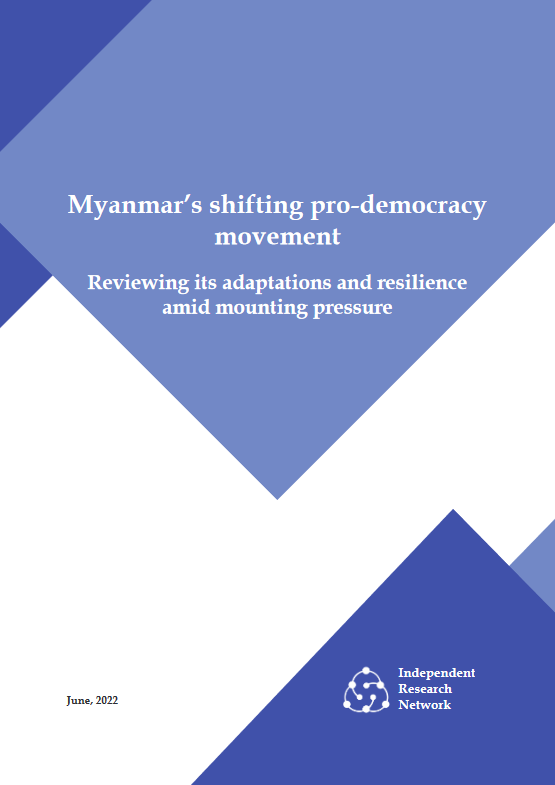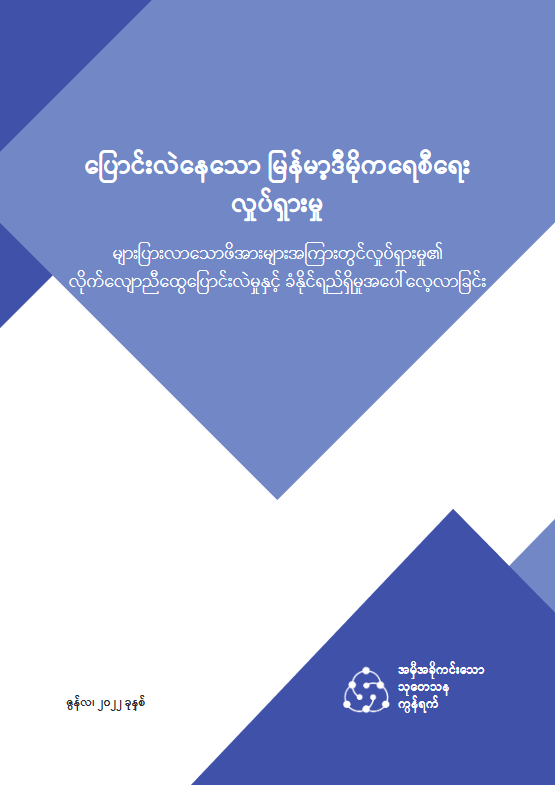Report
99 Views
Myanmar’s shifting pro-democracy movement – Reviewing its adptations and resilience amid mounting pressure
June 15th, 2022 •
Author:
Independent Research Network
•
3 minute read



Executive Summary
- Myanmar’s pro-democracy movement is multifaceted, ranging from institutions that enjoy legitimacy across Myanmar to networks that provide services and substitute for the state at the local level. These organizations have diverse forms of funding, varying approaches to the resistance and different visions of the future. This diversity across the movement has proven both a strength and vulnerability for the Myanmar’s resistance since the coup on 1 February 2021.
- Since the coup, even as the resistance to Myanmar’s military has diversified, many of its actors have sought to unify in their shared aim to remove the military from power. Amongst the country’s democratic leadership, this has focused on identifying a shared vision of a future federal democracy. Amongst local actors – both armed actors and civil society groups working to support the population – this has tended to prioritize cooperation to service immediate humanitarian needs.
- The SAC has imposed restrictions that attempt to stifle the movement and fracture its emergent unity. These restrictions take on two forms. Some have been directly imposed by the SAC. Others have emerged indirectly, as a result of the coup and subsequent political, economic, and humanitarian crisis over which the SAC has presided. This brief focuses on the financial and economic restrictions that the pro-democracy movement has navigated since the coup.
- The pro-democracy movement’s response to the constraints placed on it highlight both its resilience and the limitations of the SAC’s powers. Because many of the restrictions that are considered have spillover impacts on the broader population, the SAC is limited in its ability to directly target the movement. Its actions are also likely to further broaden and entrench the opposition to its rule.
- While these restrictions have generally increased transaction costs in the pro-democracy movement’s activities and strained its access to certain flows of resources, they have also led to new forms of adaptation and cooperation across the movement. The brief hypothesizes what they suggest about the movement’s durability and sustainability as new pressures mount.
- The final portion of the brief focuses on how new forms of cooperation have emerged across the movement. In different parts of the country, and at different moments over the last year, different actors have come together to maximize their legitimacy and shift their tactics. They have developed novel arrangements to access funds and to manage the consequences of economic collapse in different parts of the country. We focus attention on these novel arrangements to distill recommendations for how they can be encouraged and supported across the pro-democracy movement.

